Sponsored Post by Eleven
Announcing the winners of Eleven's "Marstopia" competition on Martian vernacular design
By Sponsor|
Tuesday, May 22, 2018
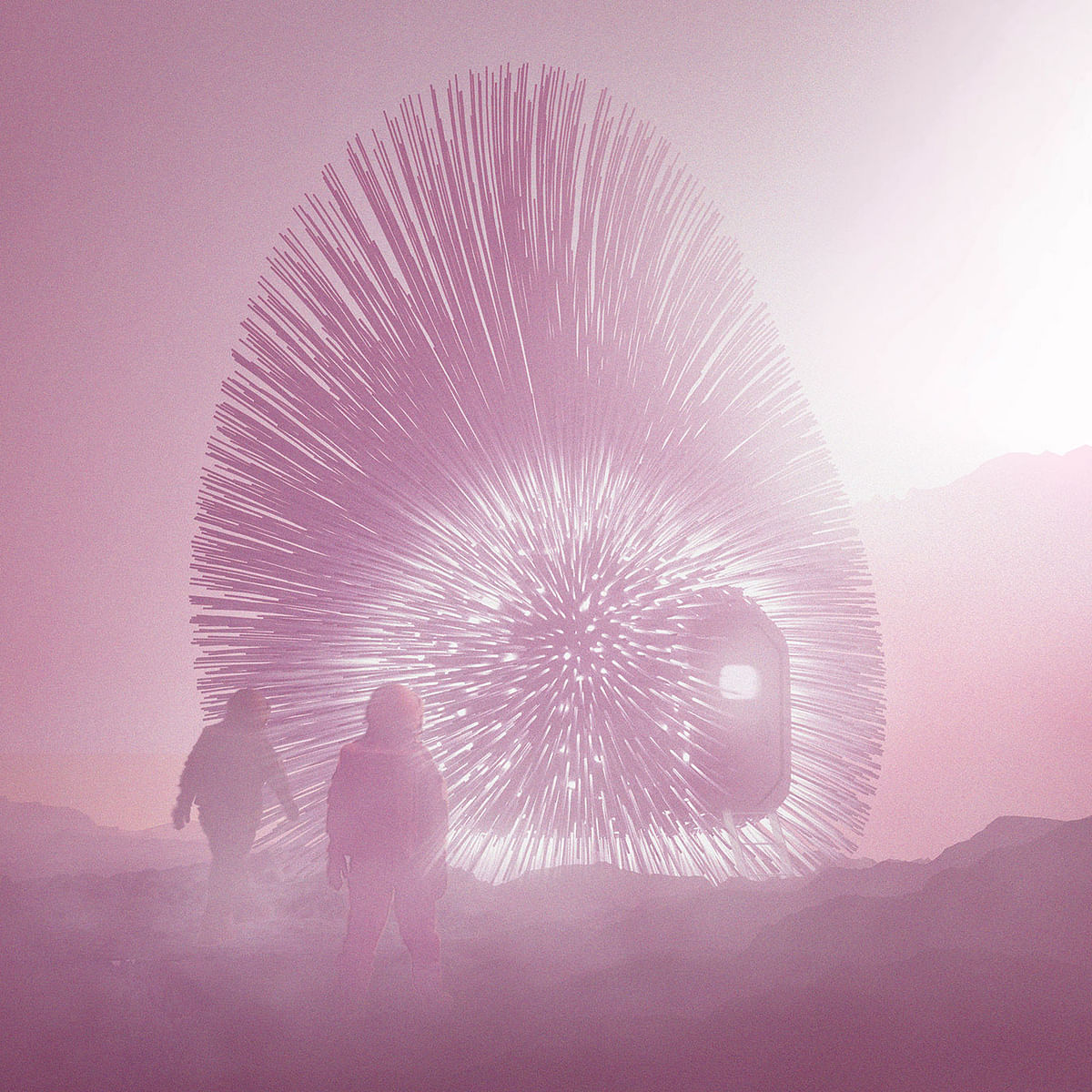
Related
The results are in and the winners of Marstopia are finally here! The competition – the sequel to Eleven’s award-winning Moontopia – set its sights on Mars and asked the creative community one question: what does Martian vernacular architecture and design look like?
Hundreds of people from all across the world responded to Eleven’s 9th international competition. Some with visions of utopias, others with dystopias. Some focusing on small-scale exploratory units, others with urban models for fully fledged Martian cities. Whatever the intention, one thing is certain: the red planet has been an inspiration for some fascinating concepts, and the idea of a martian vernacular has given rise to some truly creative, amazing visions.
The submitted proposals are simply mind-blowing and Eleven are excited to announce the winners of this truly out of this world challenge.

WINNERS: ‘Dandelion Shelter’ by Karl-Johan Sørensen & Sebastian Aristotelis Frederiksen (Denmark)
Every once in a while, great things really do come in small packages. Dandelion Shelter is an exquisitely detailed and refined design which comes to life through beautiful renders of life on Mars. Every detail of this project has been considered and conveyed through a masterclass of how to pitch your vision in architecture. Inspired by Dandelions, this self-building ‘fluffy’ martian shelter is clad with a glowing Triboelectric Harvester which transforms electrostatic energy into power and traps Martian dust as a radiation shield. The pod also employs an Algae Bath as a secondary radiation shield and food source for its inhabitants. Elegant, Smart and Protective: the perfect companion for a Martian adventure.
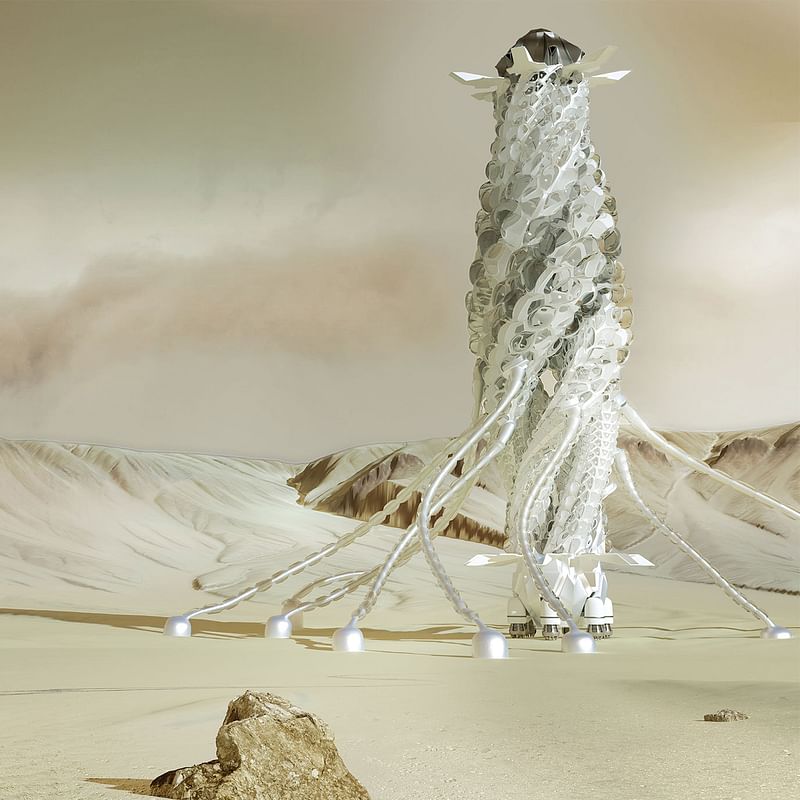
RUNNER-UP: ‘Mars H2.0’ by Aleksandar Bursac & Ivan Djikanovic (Serbia)
Mars H2.0 accurately emphasises our need to steadily test and push boundaries as a species. Behind the enticing visualisations, the fluid design – inspired by honeycombs – promises to be a hypothesis that would be able to persist in a hostile environment such as Mars. The project details a rocket ship which – upon landing – transforms itself into a vessel for habitation and a harvester of Martian water. Mars H2.0 isn’t just a dwelling, but a dynamic generator for life.

PEOPLE’S CHOICE: ‘Desert Snowflake’ by Robert Salazar, Anastasia Prosina & Svetlana Krinochkina (USA, Russia)
This self-erecting, ultralight, deployable Geodesic Dome takes Buckminster Fuller’s ideas into the new Millenium. Desert Snowflake, the winner of the people’s votes, is an ode to architectural origami form. It showcases the value of flexible, lightweight yet highly-robust construction systems paramount for extraterrestrial colonisation. The spore-like structure has been designed with adaptability and modularity in mind, allowing for continued growth of the Martian colony in time.

HONOURABLE MENTION: ‘Below Freezing’ by Shane Powers & Linjie Wang (USA, China)
The idea of using martian lava tubes as a basis for shelter recently became very popular in the debate of Martian colonisation. This project stands out from its competitors because of the thoroughly thought out mission steps and well-designed construction process of the sealing structures. Below Freezing outlines a relatively large and well-protected space that first explorers will have at their disposal. The best advantage of this idea is the Ice Tower. It is a creative combination of a skydome with a weather shield and a vertical transportation system integrated with it. The project highlights the use of delta 3D printing from above and melted ice as building blocks. It is a rational approach, which maximises the best opportunities from what local conditions can give. All this is presented through beautiful self-explaining renderings and drawings.

HONOURABLE MENTION: ‘Particle Regeneration’ by Chi Bhatia, Joanna Maria Lesna, Bryan Rincon & Wala’ Sahloul (India, Poland, Colombia, Syria)
Particle Regeneration is one of the few projects which tackles some of the most severe threats of Martian living – being the lack of water and the frequent violent sandstorms – and harnesses them to its advantage. “Forms follows environment” is the underlining thesis of this project. A real example of human ingenuity in turning adversities into opportunities, which comes to life in a functioning, sustainable vertical community inhabiting stunning architectural forms.

HONOURABLE MENTION: ‘City Crater’ by Wenyi Zhu, Qizhen Tang & Xiaohan Ding (China)
It looks like Elon’s red Tesla is back, and this time it’s landing on Mars! But nevermind about Mr Musk’s space-car, City Crater is a vision of life on Mars which defines a vernacular urban model for the red planet. This concept imagines cities built into the rims of Martian craters, with a strong emphasis put on the refinement of Martian water in the pursuit of self-sustaining life. The ring-cities take a geological element and turn it into an architectural plinth, maximising on the in-situ geomorphology and minimising the visual impact of development on Mars despite the large-scale proposal. Did we already mention the red Tesla?

HONOURABLE MENTION: ‘Colony’ by Bonnie Gordon (Australia)
When asked to imagine a colony on Mars, this project leaps forward beyond architectural form and into the very foundation of life itself. Based on Dr Michio Kaku’s scientific possibility that DNA originated on Mars and was brought to earth by galactic debris, and linking this theory with Dr Robert Zubrin’s observations that life on earth is responsible for terraforming our planet, this project introduces a natural process of Martian colonisation that surpasses the human species itself. How do you colonise Mars? You let Mars create it’s own life forms… with a little help from human science. Colony is about ensuring the process of life on Mars instead of planting an alien human settlement on its soil. Stunning concept. Stunning graphics. Utterly mesmerising. The idea that a colony on Mars should be about terraforming and create in-situ martian life rather than impose human domination is poetic, unique and highly original.
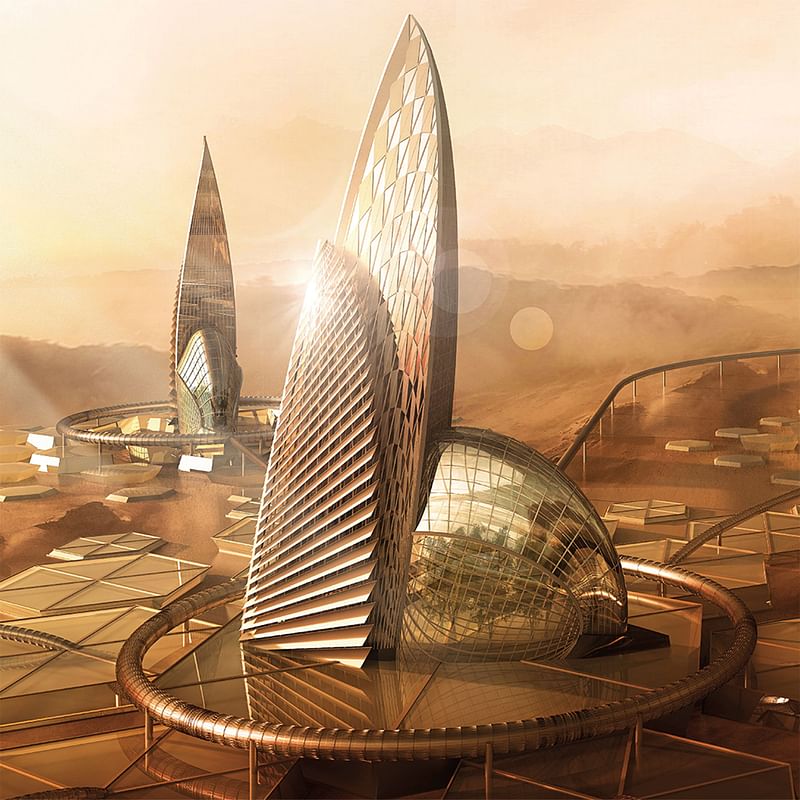
HONOURABLE MENTIONS: ‘S.E.E.Ds of Mars’ by Nicholas Ho & Darren Chan (Hong Kong, UK)
The project’s opening narrative shows a deep understanding of the ‘why’ behind the mission and each step that follows from the technologically-based construction, through the various project stages, and the overall design concept carries the same force and determination on this singular mission. Most compelling is the new architectural and engineering language that is given birth and life in the illustrations and renders that are profoundly thoughtful and composed. This phased city, inspired by concepts derived from natural systems, includes the use of advanced robotics and drones.
Hungry for more visions of Marstopia? Come and check out our winning entries in full and take a look at the rest of the amazing projects here.
About Eleven
Marstopia was organised by Eleven, an architecture and creative-lifestyle magazine, design agency and online platform dedicated to creative innovation, architecture and design. Eleven is one of the leading competition generators, creating award-winning international challenges and publishing articles on the industry’s coolest people, places, ideas and designs.
All images courtesy of Eleven Magazine.
RELATED COMPETITION MARSTOPIA

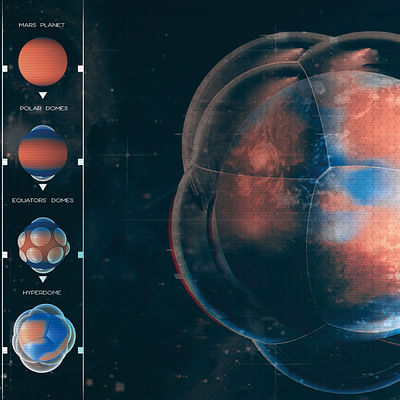
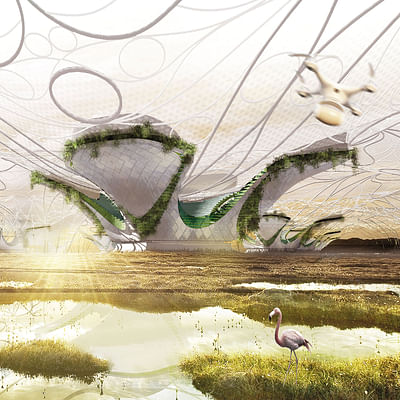
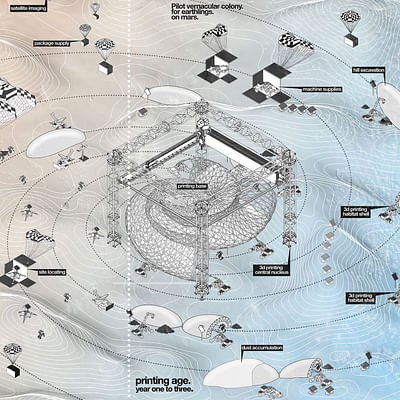

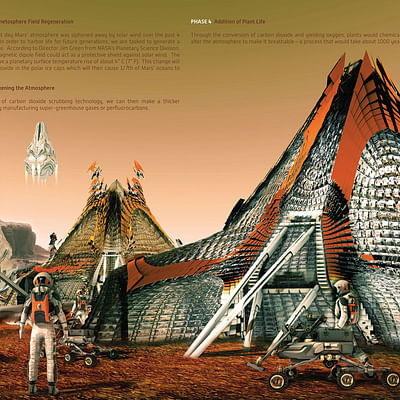

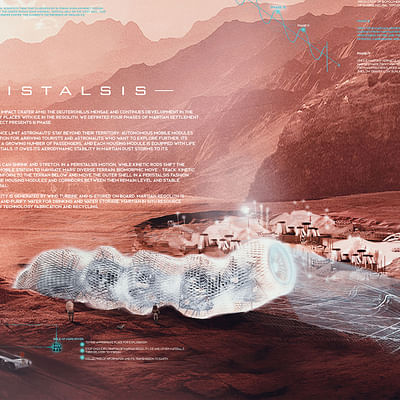
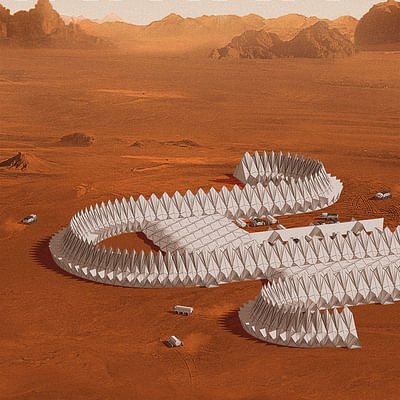

Share
0 Comments
Comment as :